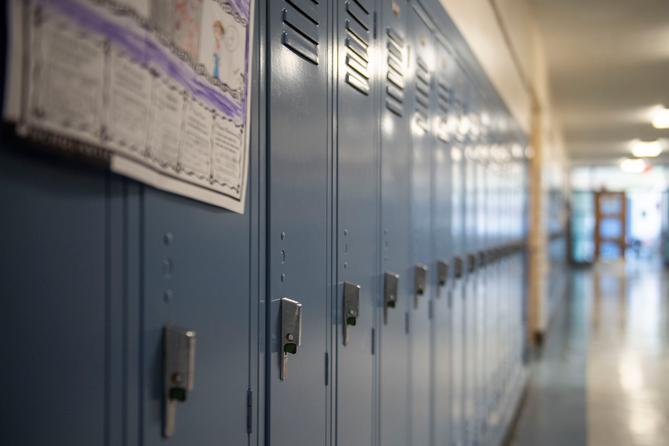HARRISBURG — Fifty Pennsylvania school districts with serious property tax burdens will receive an extra $32 million as part of a sweeping effort to overhaul education funding in this year’s budget.
The supplements, which range from $50,000 to $5 million, target districts with high local taxes compared to the wealth of their residents. Many of the districts that will receive a supplement are in Allegheny County or the Philadelphia collar counties.
State law directs local school boards to use the money to mitigate or prevent property tax increases, supplement existing tax reduction programs, or reduce debt.
The tax equity supplements are part of a larger effort to respond to a Commonwealth Court decision that found Pennsylvania’s public school funding system is unconstitutionally inequitable. A central part of the inequity stems from property taxes. Pennsylvania districts rely heavily on them to fund education, which causes disparities between schools.
In responding to the ruling, lawmakers have focused most of their energy on aiding the poorest districts.
Democrats who control the state House, Republicans who control the Senate, and Democratic Gov. Josh Shapiro agreed in this year’s state budget to increase K-12 education by more than $1 billion and to put roughly half of that toward helping those districts.
Lawmakers appropriated $493.8 million for these new adequacy supplements. Funding for the tax equity supplements is small in comparison — $32 million for this fiscal year.
Still, Dan Urevick-Ackelsberg, an attorney for the Public Interest Law Center who is involved in the school funding case, said he sees the tax equity supplement as a logical step toward creating a fairer system.
In some cases, he noted, a school district creates good outcomes for students because it asks residents to pay much more in taxes — the district, in other words, is putting in “extraordinary effort.”
“So it makes sense to lessen their burden, to not take advantage of the amazing work that those districts have done,” Urevick-Ackelsberg said.
The supplements will be awarded to districts based on their “local effort rate,” a metric calculated by dividing the revenue a district raises through local taxes by the market value of property within its borders and the personal income of its residents.
Districts qualify for the supplement if, compared with the rest of the state, their local effort rates are in the 90th percentile or above.
A higher local effort rate means a higher supplement. Supplement levels are determined by comparing a district’s actual tax revenue to the revenue it would have brought in if it had taxed residents at the 90th percentile rate.
Fifty school districts across the state will receive supplements, including 15 in Allegheny County. Another 15 districts are located in Delaware and Montgomery Counties, as well as other Philadelphia suburbs.
The boosts in funding range greatly in size. West York Area School District in central Pennsylvania will receive $23,000, the smallest supplement. East Stroudsburg Area School District in Monroe County will receive $5.5 million, the largest. The median supplement is about $330,000.
For Cosmas Curry, the tax equity supplement offers long-awaited relief.
Curry is the superintendent of Stroudsburg Area School District, which is set to receive the second-highest supplement — nearly $2.5 million. Curry said the support prompted his school board to discuss lowering property taxes for the first time in years.
“Anything we can give back— even 50 bucks, 100 bucks — is a start. And if this money comes in annually like we hope it's going to, it’s going to make a big difference for families,” Curry told Spotlight PA.
The tax equity supplement was recommended by the Basic Education Funding Commission, a bipartisan group of lawmakers that’s reviewing the state’s public education system. As a part of that review, the commission held hearings statewide over nine months that produced two reports — one backed by Democrats on the commission and the other by Republicans. The commission approved the Democratic-authored report.
The Republican-backed report recommended reevaluating the state’s use of property taxes to fund schools, saying that the cost is unfairly distributed and places undue burden on older Pennsylvanians. However, the proposal stopped short of offering specific changes.
The Democratic-authored report recommended a much higher tax equity supplement — $955 million over seven years.
In his budget pitch to lawmakers, Shapiro also suggested the larger supplement. The plan would have allocated funding to any district that taxes residents at the 66th percentile or higher, as opposed to the 90th percentile level that ultimately passed. That would have given funding to about 170 districts. As in the commission report, the funding would have been doled out over seven years.
Urevick-Ackelsberg told Spotlight PA that the funding that ultimately passed is still a good start, calling the overall education deal a “watershed” moment.
However, he noted that school districts require a long-term commitment to make lasting improvements. He advocated for expanding the number of school districts that could be included in the program, as well as the amount of money they could receive.
“We now have bipartisan agreement that there is nearly a $5 billion gap … The next step to do is to fill the gap.”
BEFORE YOU GO… If you learned something from this article, pay it forward and contribute to Spotlight PA at spotlightpa.org/donate. Spotlight PA is funded by foundations and readers like you who are committed to accountability journalism that gets results.

